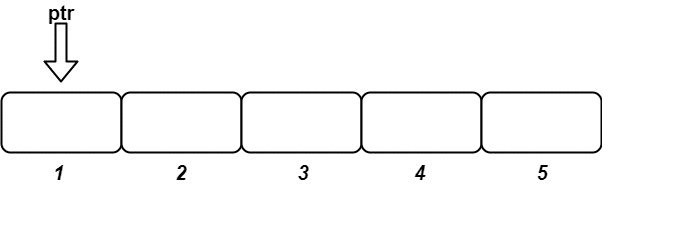1656.设计有序流:阅读理解
【LetMeFly】1656.设计有序流:阅读理解
力扣题目链接:https://leetcode.cn/problems/design-an-ordered-stream/
有 n 个 (id, value) 对,其中 id 是 1 到 n 之间的一个整数,value 是一个字符串。不存在 id 相同的两个 (id, value) 对。
设计一个流,以 任意 顺序获取 n 个 (id, value) 对,并在多次调用时 按 id 递增的顺序 返回一些值。
实现 OrderedStream 类:
OrderedStream(int n)构造一个能接收n个值的流,并将当前指针ptr设为1。String[] insert(int id, String value)向流中存储新的(id, value)对。存储后:- 如果流存储有
id = ptr的(id, value)对,则找出从id = ptr开始的 最长 id 连续递增序列 ,并 按顺序 返回与这些 id 关联的值的列表。然后,将ptr更新为最后那个id + 1。 -
否则,返回一个空列表。
- 如果流存储有
示例:

输入 ["OrderedStream", "insert", "insert", "insert", "insert", "insert"] [[5], [3, "ccccc"], [1, "aaaaa"], [2, "bbbbb"], [5, "eeeee"], [4, "ddddd"]] 输出 [null, [], ["aaaaa"], ["bbbbb", "ccccc"], [], ["ddddd", "eeeee"]] 解释 OrderedStream os= new OrderedStream(5); os.insert(3, "ccccc"); // 插入 (3, "ccccc"),返回 [] os.insert(1, "aaaaa"); // 插入 (1, "aaaaa"),返回 ["aaaaa"] os.insert(2, "bbbbb"); // 插入 (2, "bbbbb"),返回 ["bbbbb", "ccccc"] os.insert(5, "eeeee"); // 插入 (5, "eeeee"),返回 [] os.insert(4, "ddddd"); // 插入 (4, "ddddd"),返回 ["ddddd", "eeeee"]
提示:
1 <= n <= 10001 <= id <= nvalue.length == 5value仅由小写字母组成- 每次调用
insert都会使用一个唯一的id - 恰好调用
n次insert
方法一:构造
类初始化时,开辟一个大小为$n+1$的空间,并将$ptr$赋值为$1$
之后每次插入元素时,先将元素放入数组中的对应位置,然后当指针在合法范围内且当前位置不为空时,将这个元素添加到答案中。
- 时间复杂度:
- 初始化的时间复杂度为$O(n)$,因为要开辟大小为$n$的空间
- 之后每次调用的平均复杂度为$O(1)$,因为所有的$n$次调用共访问了数组$1$或$2$次
- 空间复杂度$O(n)$
AC代码
C++
1 | |
Python
1 | |
Java
1 | |
Golang:也可使用指针直接引用切片
1 | |
同步发文于CSDN,原创不易,转载请附上原文链接哦~
Tisfy:https://letmefly.blog.csdn.net/article/details/126358485
1656.设计有序流:阅读理解
https://blog.letmefly.xyz/2022/08/16/LeetCode 1656.设计有序流/